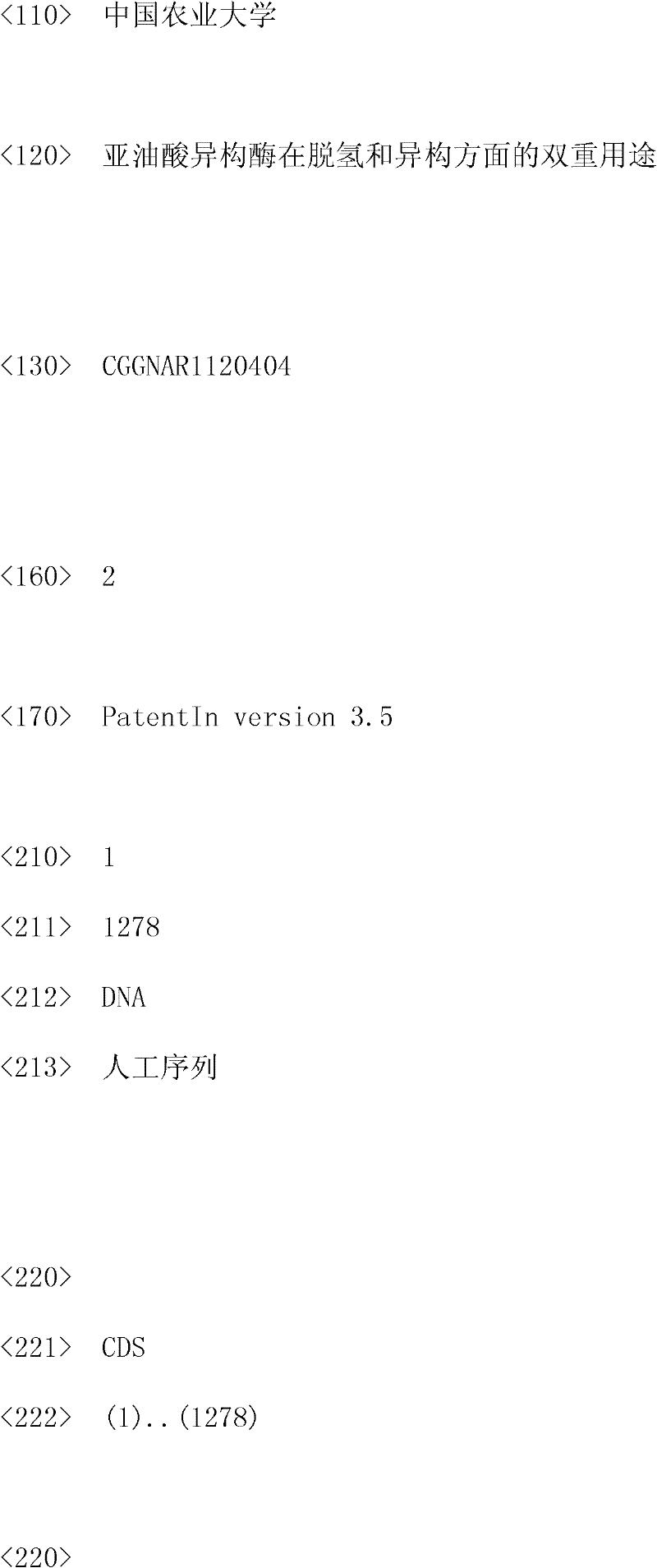Dual purposes of linoleate isomerase in aspects of dehydrogenation and isomerism
A linoleic acid isomerase, linoleic acid technology, applied in the directions of isomerase, botanical equipment and methods, biochemical equipment and methods, etc.
- Summary
- Abstract
- Description
- Claims
- Application Information
AI Technical Summary
Problems solved by technology
Method used
Image
Examples
Embodiment 1
[0034] Example 1. Stable expression of exogenous pai gene in NIH / 3T3 cells
[0035] 1. Construction of eukaryotic gene expression structure
[0036] According to the published original gene sequence of P. acnes linoleate isomerase pai (GenBank accession number AX062088), the original DNA sequence was codon-optimized through genetic engineering methods; at the same time, the start codon ATG was added Known as Kozak sequence oligonucleotides, such as GCCACC, GNN is added after ATG to meet Kozak rules. In this embodiment, a glycine codon GGA is added after the start codon ATG; the coding sequence of histidine tag is added before the stop codon TAA. The optimized nucleotide sequence is the DNA sequence obtained by inserting 6 histidine codons between the 1275 and 1276 positions of sequence 1 in the sequence listing, and adding GCCACC before ATG (the first position of sequence 1). The 5th and 6th positions of sequence 1 are G and A respectively. Among the inserted 6 histidine codons,...
Embodiment 2
[0044] Example 2: Fatty acid determination and CLA biosynthesis guided by exogenous pai gene
[0045] 1 untransfected control cell NIH / 3T3, 1 GPF control cell obtained in Example 1, and 9 positive Pai cell lines obtained in Example 1 at 2×10 per ml. 5 The density of each cell is inoculated into a Φ100-mm culture dish and cultured separately.
PUM
 Login to View More
Login to View More Abstract
Description
Claims
Application Information
 Login to View More
Login to View More - R&D
- Intellectual Property
- Life Sciences
- Materials
- Tech Scout
- Unparalleled Data Quality
- Higher Quality Content
- 60% Fewer Hallucinations
Browse by: Latest US Patents, China's latest patents, Technical Efficacy Thesaurus, Application Domain, Technology Topic, Popular Technical Reports.
© 2025 PatSnap. All rights reserved.Legal|Privacy policy|Modern Slavery Act Transparency Statement|Sitemap|About US| Contact US: help@patsnap.com



